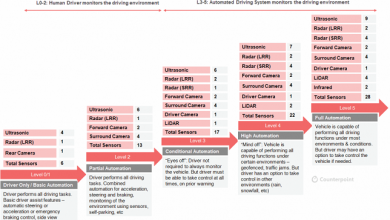2019 Transportation Trends Disrupting the Industry
The transportation industry has been in upheaval for more than a century, it seems, but the recent spate of tech innovation has certainly sent entrenched transportation companies spinning. Car and ride sharing apps are just the beginning of the disruption likely to affect transportation for years to come. In 2019 alone, some major trends are likely to impact what transportation looks like and how it functions. For more information on some of these trends, read on:
Automation
By now, someone would have to be living under a rock at the bottom of the ocean to avoid hearing about autonomous vehicles. Driverless cars have been anticipated for more than a century, and finally, they are gracing city streets around the world — but only in trial runs. Certain municipalities are welcoming test robots onto their roads in return for perks like jobs and taxes. These experiments allow self-driving car companies to refine their technology before they roll the robots out to the public.
A few years ago, Nissan announced that it would have a driverless model available on the market in 2019 — which, one might note, is next year. However, at the same time, GM expected 2018 to see the release of their autonomous line. It’s safe to say that American streets won’t see self-driving cars available for purchase everywhere until late in 2019, if at all.
Still, the auto industry is bracing for how autonomousness will affect sales. Most experts believe that self-driving cars won’t be a personal possession, the way automobiles have always been. Instead, they will be an accessible service, like more convenient, more private buses. Already, manufacturers are preparing for this shift away from personal car ownership by building their own ride-hailing and car-sharing operations. The industry should expect to see these services grow — and become more entrenched in society — in the coming year.
Consumer Behavior
With the rise of the internet came the rise of consumer power. Now, the average person doesn’t have to rely on old, ineffective traditions to make decisions that benefit them and their community; they can turn to the web to assemble, demonstrate demand and generate newer, better solutions. Perhaps the best example of this is the sharing economy, which is obliterating the consumer transportation industry as we know it.
Autonomous vehicles aren’t the only reason car manufacturers are pivoting toward ride-hailing. Consumer behavior has been moving steadily toward sharing vehicles for years, since apps like Uber and Lyft first made ride-hailing affordable and convenient. Many experts predict the future of transportation to be defined by the SAEV: the shared, autonomous, electric vehicle, which will reduce traffic congestion, reduce consumer transportation expenses, reduce toxic vehicle emissions and do more good. As consumers perceive their transportation choices, it’s undoubtable that the SAEV will indeed rise in the years to come.
Mapping
Travelers have relied on maps to get from Point A to Point B for millennia, so it’s safe to say that the concept of cartography isn’t disrupting transportation in 2019. However, it is how maps are being generated and applied to transport that is set to cause major change. Google cornered the consumer GPS market with Google Maps, but as autonomous vehicles become more popular, the computers in these cars will need much more detailed 3D maps to get around safely.
There is currently a battle raging to determine who will build and sell these maps to self-driving car manufacturers and operators. This struggle to develop the most accurate maps faster and less expensively than the competition is already influencing the transportation industry as many companies wait diligently for a leader to emerge.
Platforms
Maps aren’t the only tools shared, autonomous vehicles need to rise. Because it is unlikely that the government will develop its own SAEV programs, private companies are growing to fill the consumer demand — and most ride- and car-sharing entrepreneurs need assistance in building the tech to organize their operations.
To fill this need, companies like RideCell offer pre-made platforms that track automobile fleets and analyze transportation data. This helps ride- and car-sharing startups understand their performance, ensure proper maintenance and perform other critical actions relatively early. With platforms like these available, any transportation entrepreneur can quickly and efficiently grow a business, catering to a new audience or underserved area and disrupting traditional transportation norms.
By now, the transportation industry should expect change. Fortunately, most of the trends affecting the industry promise growth and opportunity for more businesses — and lower costs and higher convenience for consumers.
Author:
Jackie Roberson
jackier@seekvisibility.com
Jackie is a content coordinator and contributor that creates quality articles for topics like technology, home life, and education. She studied business management and is continually building positive relationships with other publishers and the internet community



